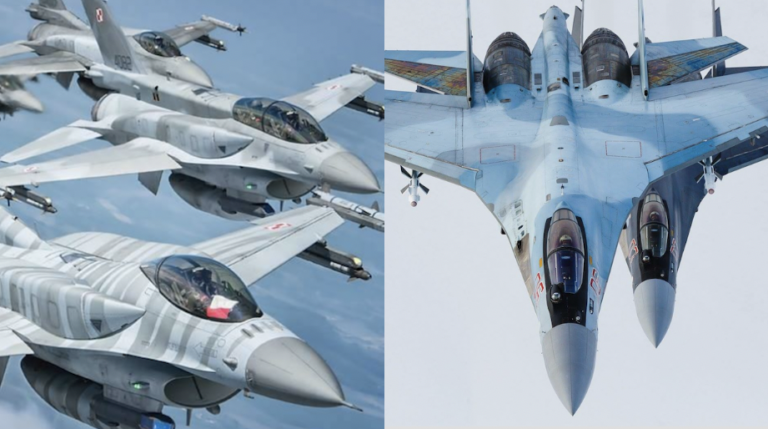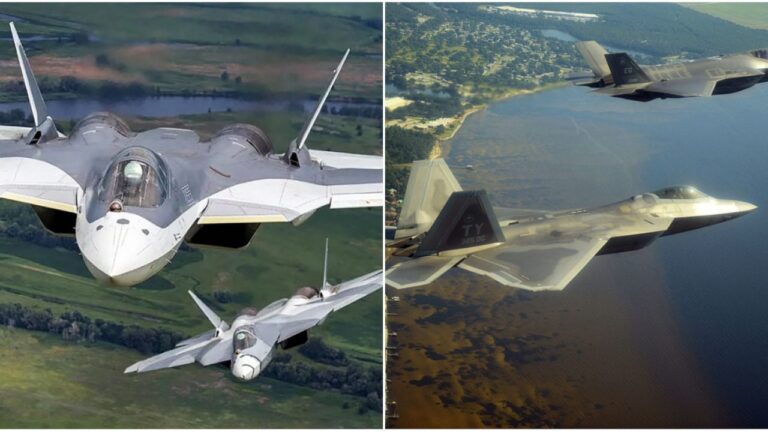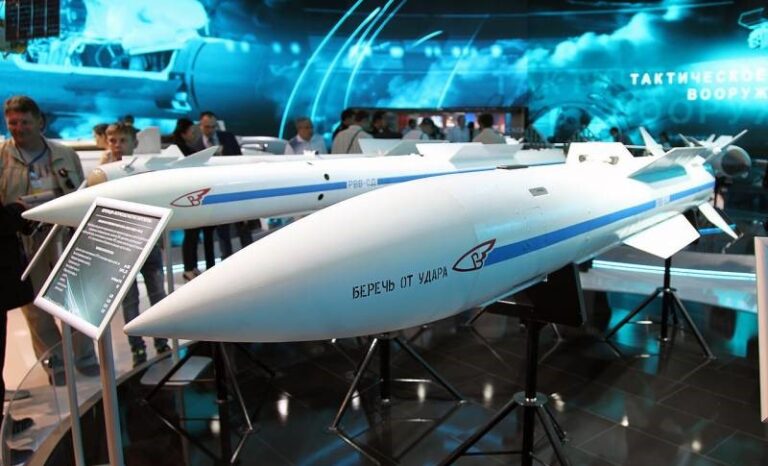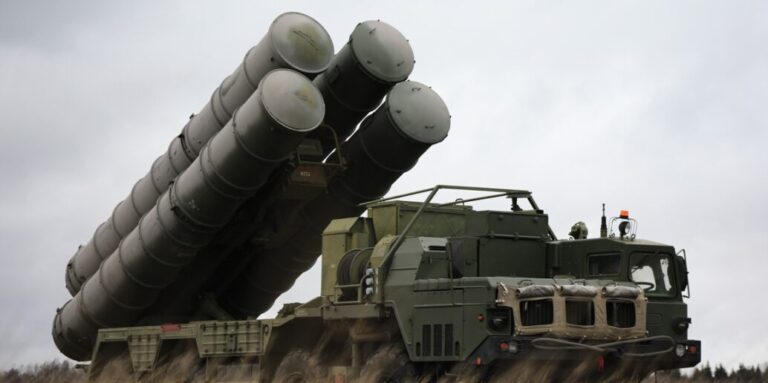Let’s assess Russian and Western aircraft technology, focusing on their overall quality rather than their history. Starting with air power, the USA and NATO have a clear dominance over Russia, surpassing them in this regard. Now, let’s examine the aspects in which they excel. During the Soviet Union era and the Cold War, America possessed superior aircraft like the F-15 and F-16. At the same time, Russia was equipped with planes like the Sukhoi 27, MiG 29 and MiG 25.The MiG 25 was truly a marvel of innovation ,and it was built in response of American SR-71 black bird.The SR-71 black bird was able to perform multiple surveillance and reconnaissance missions and due to backward of technology Soviet union was unable to track black bird due to its top speed of Mach 3 .In response Soviet union develop highly advanced and agile aircraft named as MiG 25 Therefore, it’s essential to consider both countries in terms of technology. This was a time when Beyond Visual Range (BVR) technology was in its early stages, and most wars were fought within visual range. To surpass the West, Russia took a distinctly different approach and innovated their planes with thrust vectoring capabilities. The airframes of these planes were highly agile and competitive with Western planes.
To surpass Soviet union, America began developing 5th-generation (5G) planes. In response, the Soviet Union initiated projects like the Sukhoi 47 and MiG 1.44. However, after the Soviet Union’s collapse, these projects were abandoned due to economic restrictions.MIG 1.44 was abandoned because Soviet union was unable to develop a new airframe design. During this period, Russia faced significant economic challenges, and military advancement was no longer a priority. Meanwhile, the West and America continued to advance their technology, transitioning from kinetic to electronic systems. Consequently, USSR fell behind in terms of computerized systems, stealth technology, and radar capabilities.

Fifth generation aircrafts developed by Russia and US:
After Moscow’s economy stabilized, they resumed work on the Sukhoi 35, Sukhoi 30SM2, and Sukhoi 57. Although these planes boasted phenomenal maneuverability, their fundamental design remained unchanged. Western countries struggled to compete with their agility, but America’s new F-22 and F-35 planes, although less agile, featured advanced systems and sophisticated electronic software that enabled them to evade detection by Russian planes.”As a solution, Russians innovated their planes with passive detection capabilities. Russians also installed new types of infrared search and track systems in their planes. These systems could capture the heat signature of planes and detect them, but there were limitations due to three reasons: their range was limited, they were affected by weather conditions, and the direction of the system had to be aligned with the direction of the target. Therefore, these planes were effective, but not to the extent desired.

SU 57 missiles and avionics :
When Russians developed their fifth-generation planes, they employed the same kinetic technique but with a more advanced approach. They improved the radar cross-section of their planes and upgraded the electronics. Six radars were installed in the planes, providing exceptional situational awareness. No other plane in the world has these features. Currently, this plane poses a significant challenge for the West. The importance of maneuverability in dogfights diminished with the advent of high-bore sight missiles. SU57 is integrated with the variety of air to air and air to surface multi range missiles. The most notable air to air missiles used by Su57 is RV MDD which is short range missile and can target different fighter aircrafts ,rotor aircrafts ,bombers and unmanned aerial vehicles.The long range air to air missiles of Su 57 are RVV-SD and RVV-BD “The Sukhoi 57, has reduced radar cross-section which minimized detection from distance. Additionally, the plane is designed to be highly agile, allowing it to dodge an opponent’s plane when it closes in for an attack and missile fire, and engage it in a dogfight. In this scenario, the Sukhoi 57 is considered the most formidable plane in the world, and achieving success against it in dogfights would be a remarkable accomplishment in air combat, as this plane is no easy opponent.”

AESA Radar technology:
” AESA( active electronically scanned array) is an advanced radar which uses thousands of small controlled antennas that can direct radar beam without moving any physical parts.AESA radars can perform variety of functions simultaneously such as surveillance,tracking and guidance to weapon systems without need of any extra radar.It also provide aircrafts a phenomenal protection against electronic counter meausres and jamming technologies. If we examine the advanced 4th-generation planes of the West, they are significantly ahead in terms of their systems compared to Russian planes, as none of the their planes are equipped with Active Electronically Scanned Array (AESA) radar. In contrast, all Western 4th-generation planes, except the Eurofighter Typhoon, feature AESA radar. Furthermore, Western air-to-air missiles, such as the AIM-120 AMRAAM and Meteor, offer beyond-visual-range (BVR) capabilities, while missiles like MICA IR, IRIS-T, AIM-9X, and ASRAAM Block missiles can be fired within and beyond visual range.”

Russians usually emphasized more on SAM (surface to air missiles) for safeguarding its large territory over air to air missiles. Currently, Russians also lacks missiles that can compete with Western missiles. This is largely due to Russia’s lag in electronics technology, evident in missiles like the R-77 and R-27 ER. The only missile that can compete is the R-37M, but its capabilities are limited to targeting large and slow-moving aircraft, such as AWACS planes and transport aircraft. In the visual range, Russia has the R-74M/M2 missiles, which can compete with Western missiles and are comparable to the AIM-9X. In 2014, Russia faced a setback when it annexed Crimea, leading to difficulties in acquiring advanced electronics from Western countries. Similarly, Russia’s electronic warfare aircraft, such as the AWACS and jammer planes, are also lagging behind Western capabilities.”
Advanced air defense systems:
Now that we’ve discussed the qualities of Western aircrafts advanced avionics systems, it’s clear that the West is far ahead of Russia in many areas. However, there is one field where the West cannot compete with Russia: air defense systems. Although Russia’s S-300 systems have failed, systems like the Russian Pantsir, S-35 Otvitya-2, BUK M3, S-400, and S-500 are unmatched by the West. As a vast country, Russia cannot rely solely on fighter jets for defense; therefore, Russia has developed long-range systems capable of detecting and neutralizing Western aircraft.”

Read out our full article about Russia S-400 Triumf missile defense system
https://battletechinsider.com/air-defence-systems/s-400-triumf-russia-mds/
Visit our facebook page for latest defence updates :
https://www.facebook.com/people/Battle-Tech-Insider/100093541134057/?mibextid=ZbWKwL